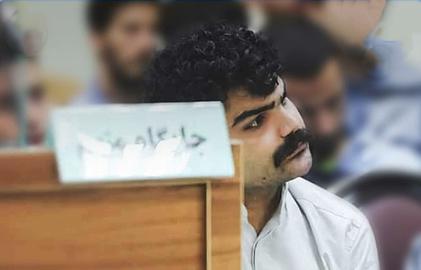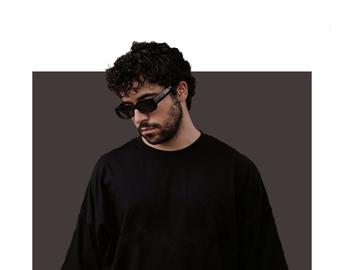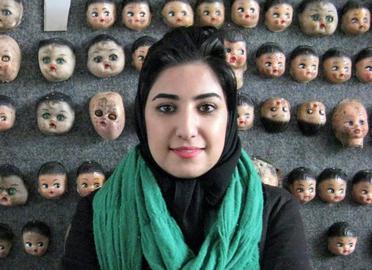Atena Farghadani was arrested on January 10, 2015 and tried on May 19, 2015 by Branch 15 of the Revolutionary Court presided over by Abolghasem Salavati. On May 28, she was sentenced to 12 years and nine months in prison.
Name: Atena Farghadani
Born: 1986, Tehran
Background: Cyber and children rights activist; painter and cartoonist; arts graduate.
Charges: Propaganda against the regime for publishing reports about the families of political prisoners; activities against national security; gathering and colluding with counter-revolutionary elements; insulting members of parliament by painting images of them and publishing the caricatures on social media; insulting the Supreme Leader, the Revolutionary Guards and the three branches of government.
Atena Farghadani was arrested on January 10, 2015 and tried on May 19, 2015 by Branch 15 of the Revolutionary Court presided over by Abolghasem Salavati. On May 28, she was sentenced to almost 13 years in prison.
This was not the first time that Farghadani had been detained. The Revolutionary Guards first arrested her on August 23, 2014. Reporting on the arrest, Amnesty International said that on the day, her parents’ house was searched, her personal belongings were confiscated and taken away and that she had been blindfolded throughout the ordeal.
At the time of her arrest, she was studying for a Bachelor of Arts at Al-Zahra University in Tehran.
Farghadani was arrested after meeting with the families of political prisoners and drawing a cartoon of Iranian parliamentarians with animal faces. The latter was drawn in reaction to two separate bills being considered by MPs at the time, which between them would outlaw voluntary sterilization, restrict access to contraceptives, and tighten divorce laws.
Following her arrest, she was held for five days in solitary confinement in Section 2A of Evin Prison, a part of the jail that is run by the Revolutionary Guards. She was later transferred to a cell that she shared with Ghoncheh Ghavami, a British-Iranian prisoner of conscience arrested for protesting against the ban on women attending live volleyball matches. She was then returned to solitary confinement for another 10 days after she went on hunger strike in protest of her detention.
During this time, she was severely beaten and banned from seeing her family or lawyer. She was eventually released after settling a substantial bail, but banned from resuming her studies.
According to Amnesty International, Atena Farghadani later told the media she was interrogated for nine hours a day for six weeks while at Evin Prison. Interrogations focused on meetings she had with the families of those killed during the unrest that followed the disputed 2009 presidential election, as well as on her cartoon.
Following her release, Farghadani posted a video in Persian on YouTube describing how prison guards had mistreated her physically. She also stated that prison authorities had installed surveillance cameras in the bathrooms at Section 2A of Evin Prison. This is how they discovered she was taking paper cups from a rubbish bin in order to paint on them.
In her video message, she said: “The guards were whispering ‘why does she want the cups?’ One of them was saying ‘rewind the film back.’ One of the guards opened the cell door violently and shouted ‘take off your clothes.’ I told them that what they were doing was illegal. One of the guards, who swore a lot, held my hands up, because I was resisting the body search. My right hand hit the wall and my wrist became swollen and bruised. I told them that I was on ‘dry’ hunger strike and that I would file a complaint. One of them said to me ‘shut your mouth or I’ll hit you so hard that your mouth will be full of blood’.”
In response to the charges against her, Farghadani wrote a letter to the Supreme Leader, Ayatollah Ali Khamenei, in which she said: "What you refer to as an 'insult to the representatives of parliament,' I deem to be artistic self-expression.“
Shortly after the video was shared in the press and on social media, Judge Salavati summoned her to Branch 15 of the Revolutionary Court. After she gave her defense, she was beaten in front of her family and taken to Gharchak Prison in Varamin near Tehran.
Three weeks after her second arrest, Farghadani went back on hunger strike in protest of her conditions at Gharchak prison. She was taken to hospital in late February after having a heart attack and briefly losing consciousness. She was then transferred back to solitary confinement at Evin Prison.
An Amnesty petition calling for Farghadani's release received a total of 33,000 signatures and was presented to the Iranian embassy in London on May 18.
To learn more about issues affecting journalists in Iran please visit: journalismisnotacrime.com
Read other cases in the series:
visit the accountability section
In this section of Iran Wire, you can contact the officials and launch your campaign for various problems


























comments